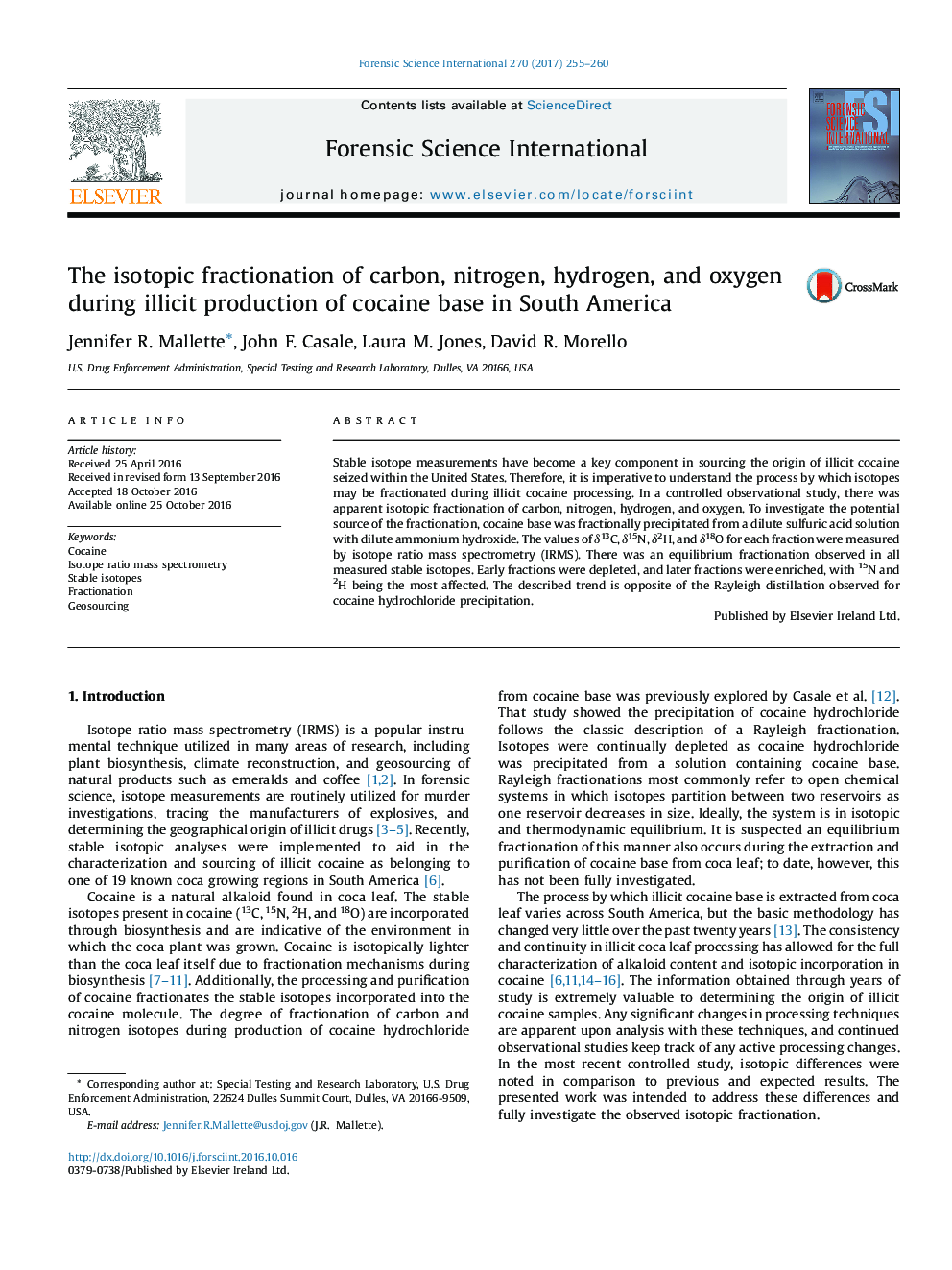| Article ID | Journal | Published Year | Pages | File Type |
|---|---|---|---|---|
| 6462569 | Forensic Science International | 2017 | 6 Pages |
â¢Fractionation of four stable isotopes in cocaine was investigated.â¢An observable fractionation event occurred during precipitation of cocaine base.â¢All four stable isotopes exhibit a fractionation opposite of the classic Rayleigh.â¢Nitrogen and hydrogen are most affected during the observed fractionation event.
Stable isotope measurements have become a key component in sourcing the origin of illicit cocaine seized within the United States. Therefore, it is imperative to understand the process by which isotopes may be fractionated during illicit cocaine processing. In a controlled observational study, there was apparent isotopic fractionation of carbon, nitrogen, hydrogen, and oxygen. To investigate the potential source of the fractionation, cocaine base was fractionally precipitated from a dilute sulfuric acid solution with dilute ammonium hydroxide. The values of δ13C, δ15N, δ2H, and δ18O for each fraction were measured by isotope ratio mass spectrometry (IRMS). There was an equilibrium fractionation observed in all measured stable isotopes. Early fractions were depleted, and later fractions were enriched, with 15N and 2H being the most affected. The described trend is opposite of the Rayleigh distillation observed for cocaine hydrochloride precipitation.
